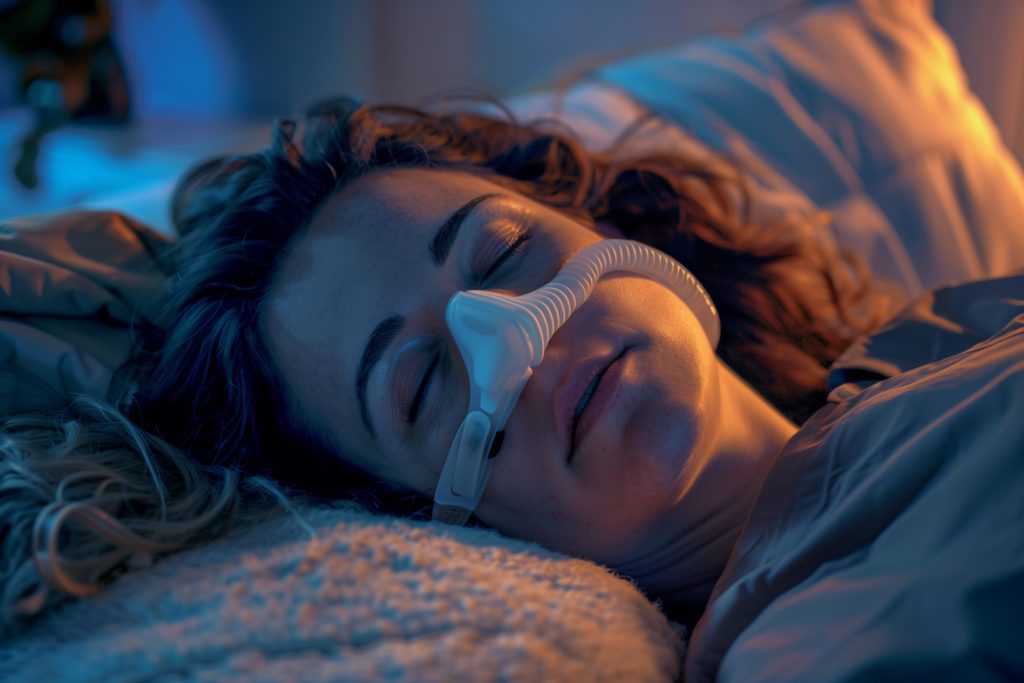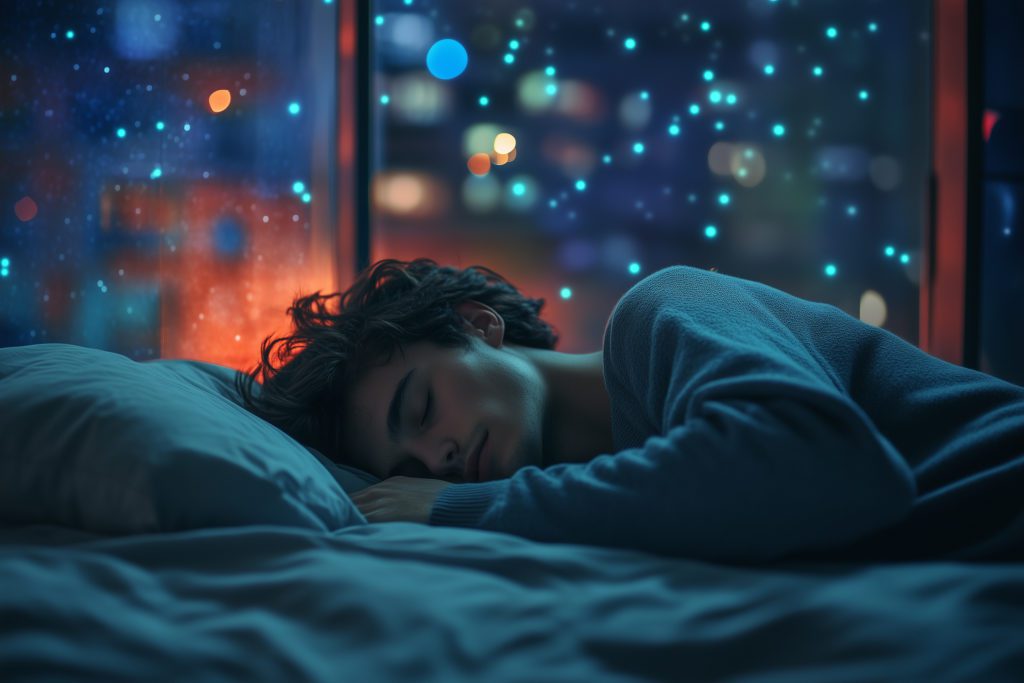
The Short and Long-Term Side Effects of a CPAP Machine
Discover the potential side effects of using a CPAP machine for sleep apnea treatment. Learn what you can expect and how to manage it effectively.

When sleep respiratory relief comes with strings attached
Anyone grappling with sleep apnea knows the nightly nuisances it brings—not just the snoring, but the deeper fear of what happens while you’re asleep. The CPAP machine steps in as a lifeline for many, offering a breath of fresh air, literally, to those gasping for a peaceful night’s sleep.
However, although this device significantly improves quality of life, it comes with its own set of challenges. From the first night you strap on that mask, you’re signing up for more than just background noise.
Let’s explore the nitty-gritty of what wearing a CPAP machine really means for your sleep health, spotlighting both the short-term adjustments and the long-haul considerations.
What is a CPAP machine?
CPAP stands for Continuous Positive Airway Pressure, and these machines are the go-to for treating obstructive sleep apnea. This condition causes your airway to collapse or block during sleep, leading to breath pauses that can jerk you awake multiple times throughout the night.
The primary function of a CPAP machine is to pump a continuous stream of air through a hose and into a mask that you wear over your nose or mouth. This stream of air keeps your airway open and clear of obstructions, allowing you to breathe smoothly all night long. The result? You stop waking up all the time, and your sleep becomes deeper and more restful.
But CPAP machines aren't just for obstructive sleep apnea. They’re also used for central sleep apnea, where the brain momentarily forgets to tell the body to breathe. Plus, with different types of CPAPs like the Bi-level PAP or Auto CPAP, there's flexibility depending on whether you need constant pressure or varying pressure throughout the night.
In a nutshell, using a CPAP means your sleep gets a major upgrade. And the benefits don’t stop there: think better heart health, less daytime sleepiness, and maybe even better management of diabetes.
Short-term side effects of CPAP machines
CPAP therapy can be a game-changer for sleep quality, but it doesn't come without a few bumps in the road. Here are some of the common short-term side effects you might encounter and how to ease them:
Nasal congestion and dryness
The continuous flow of air can lead to nasal irritation or dryness. Using a CPAP machine with a built-in humidifier can help, as it adds moisture to the air you breathe, reducing irritation.
Dry mouth
If you wake up with your mouth as dry as a desert, consider whether air is leaking from your mouth. A chin strap can help keep your mouth closed, or switching to a full-face mask might be a solution.
Skin irritation and discomfort
Masks can cause pressure marks or skin irritation. Ensure your mask fits correctly; a poorly fitted mask can be uncomfortable and less effective. Mask liners or cushions can also provide relief.
Adjustment difficulties
The sensation of wearing a mask and the sound of the machine can be disruptive at first. Give yourself time to adapt to the new sensations. Playing white noise or soft background music can help mask the sound of the machine.
As challenging as these side effects may seem, they often diminish as you adjust to the therapy. Stick with it, and soon enough, the benefits of using a CPAP machine—like waking up feeling refreshed and alert—will likely outweigh these initial discomforts.
Long-term side effects of CPAP machines
While CPAP machines are crucial for managing sleep apnea and improving overall health, long-term use does come with a few considerations:
Facial structure changes
Prolonged use of tightly fitted CPAP masks can potentially lead to changes in the facial structure, particularly indentations or pressure lines where the mask sits. To minimize this, ensure your mask fits well but isn't overly tight, and consider rotating between different types of mask designs.
Dependency on the machine
Some users may find they become dependent on their CPAP machine to sleep well, feeling unable to get any rest without it. Gradually introducing nights without the machine under medical guidance can help mitigate this dependency.
Effects on lung function
Though rare, consistent use of high pressure settings in CPAP machines can, over time, affect lung function. It's crucial to regularly check in with a healthcare provider to ensure the pressure setting is optimal and not contributing to any discomfort or other respiratory issues.
Managing the long-term side effects involves regular consultation with sleep specialists and careful monitoring of any emerging issues. With the right adjustments and ongoing care, the benefits of CPAP therapy can continue to outweigh these potential drawbacks, helping you maintain both restful sleep and good health.
Optimizing CPAP therapy with best practices
To reap the full benefits of your CPAP machine while keeping side effects at bay, consider these key strategies:
- Properly maintain your machine:
Keep your CPAP machine in top condition by cleaning it regularly. Follow the manufacturer's instructions for cleaning the mask, hose, and water chamber. This not only extends the life of your equipment but also prevents the buildup of bacteria and allergens that could cause health issues. - Use a humidifier:
If your CPAP machine doesn't already include a built-in humidifier, consider adding one. Humidifiers help moisten the air you breathe, making it more comfortable and less likely to cause dryness or irritation. - Make sure your mask fits well:
Regularly review the fit of your mask with a healthcare professional. A well-fitting mask is crucial to avoiding leaks, which can diminish the effectiveness of therapy and lead to skin irritation or dryness. - Schedule regular check-ups:
Visit your healthcare provider regularly to review your sleep apnea symptoms, machine settings, and any side effects you're experiencing. Adjustments may be necessary as your condition changes or as you age. - Do your research:
Stay informed about the latest CPAP technologies and accessories. Advances in mask design, quieter machines, and smarter humidification settings can all make your CPAP therapy more comfortable.
Adhere to these practices to maximize the effectiveness of your CPAP therapy and enjoy a smoother, more comfortable experience that supports your sleep health and overall well-being.
Wrapping up our CPAP insights
We've unpacked the ins and outs of CPAP therapy, from nightly nuisances to long-haul hitches. Remember, it’s all about fine-tuning your approach to keep those side effects in check. And a sleep tracking app is a smart way to see just how well your CPAP is working (i.e. if you’re sleeping better)—or when slight adjustments are needed. Here’s to mastering your machine and reclaiming restful nights!

Written by
Georgia Austin
Professionally trained copywriter, editor, and content marketing strategist with over 7 years of experience—working with brands like Nike, Siemens, Toshiba, Tommy Hilfiger, Culture Trip, and Klook.
Download Pillow
Get help
Press & News
Legal
Connect
X (Twitter)
Company
Copyright © Neybox Digital Ltd.



